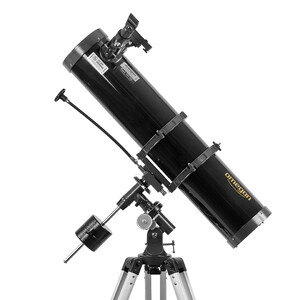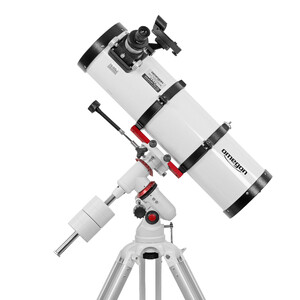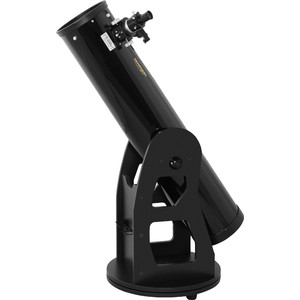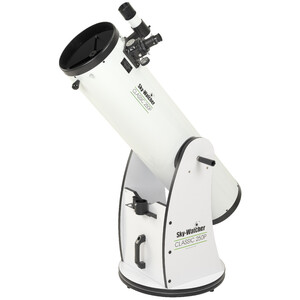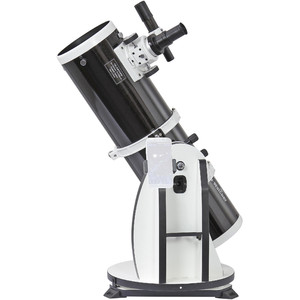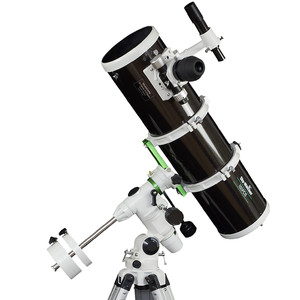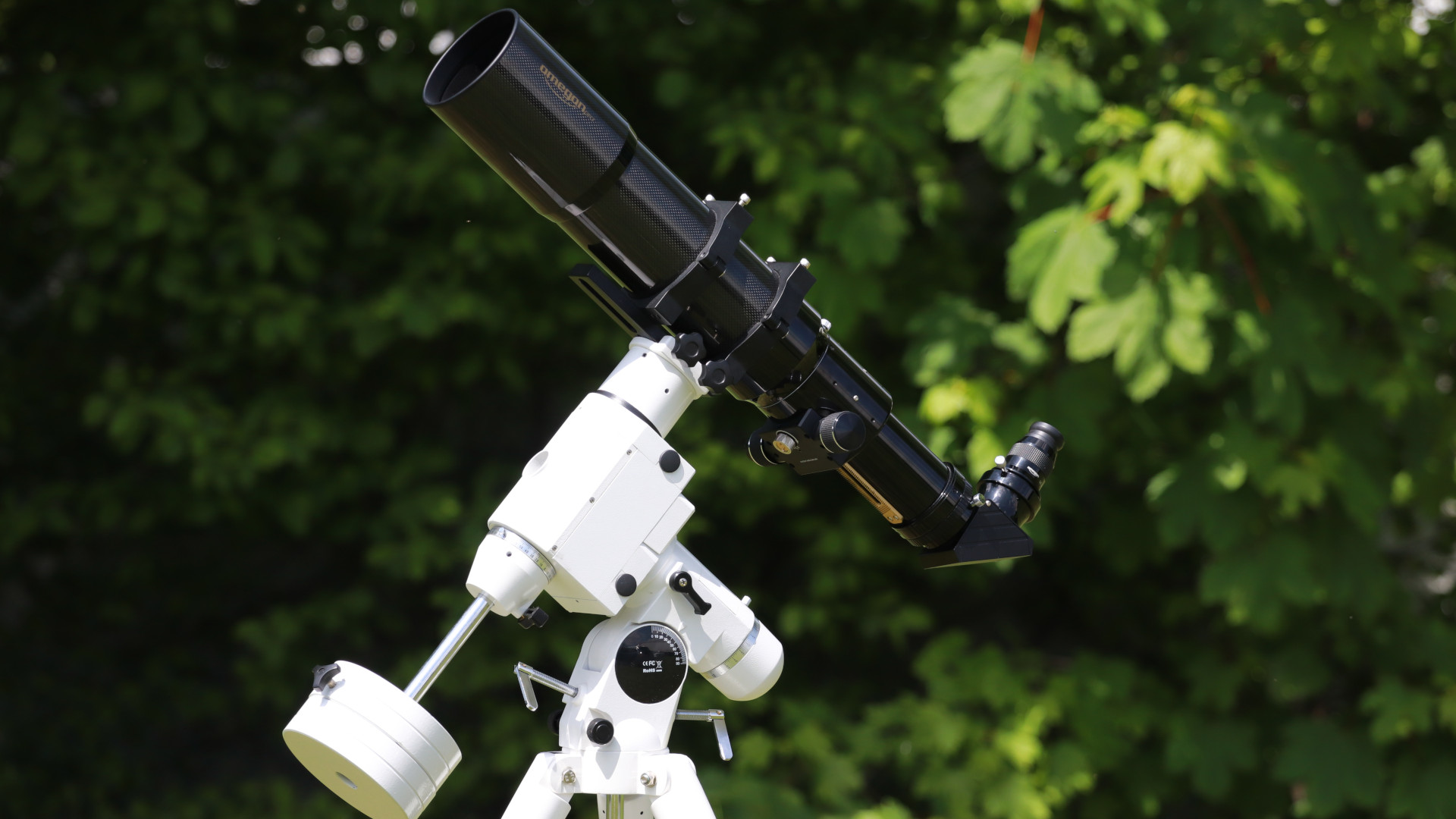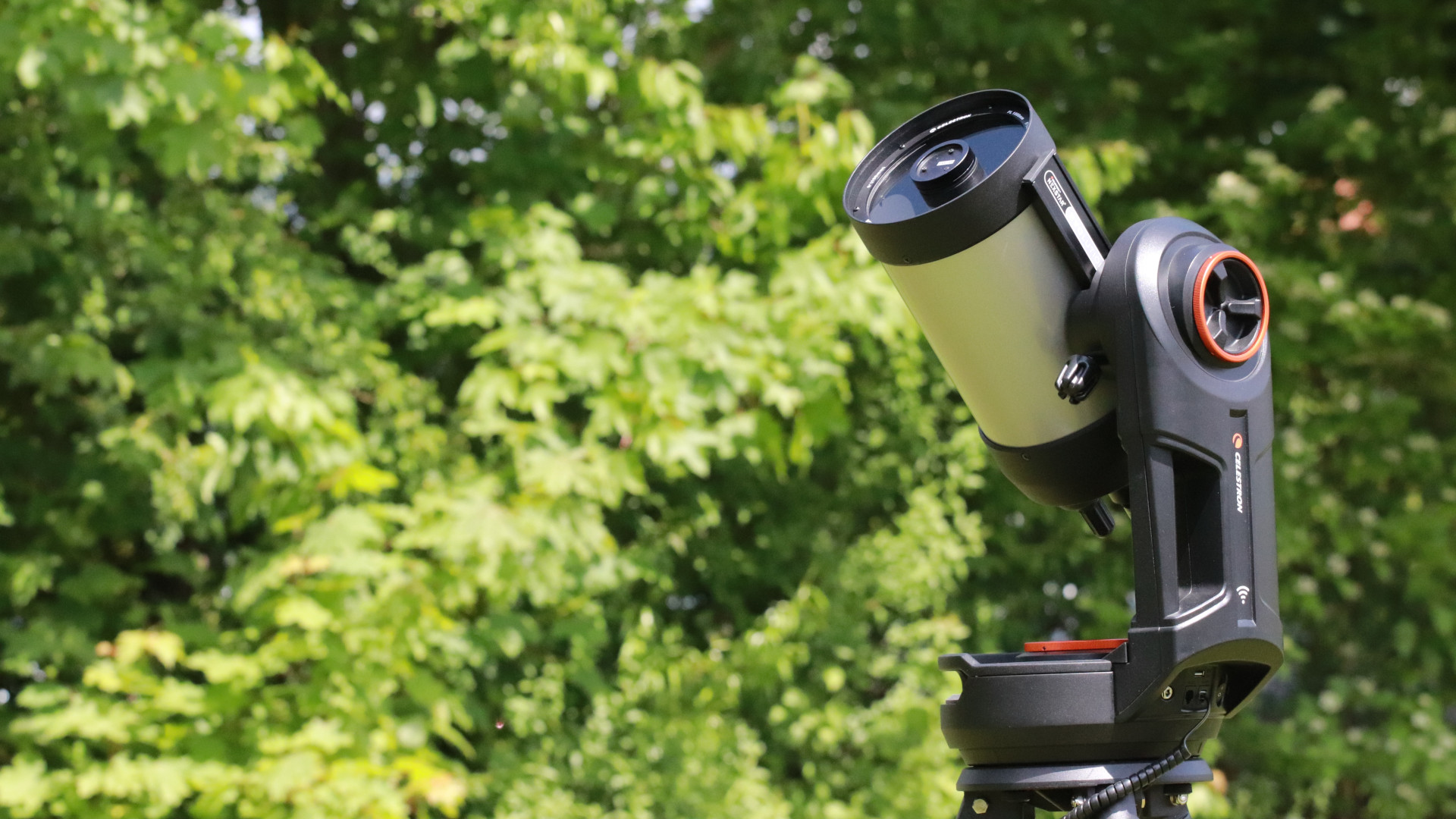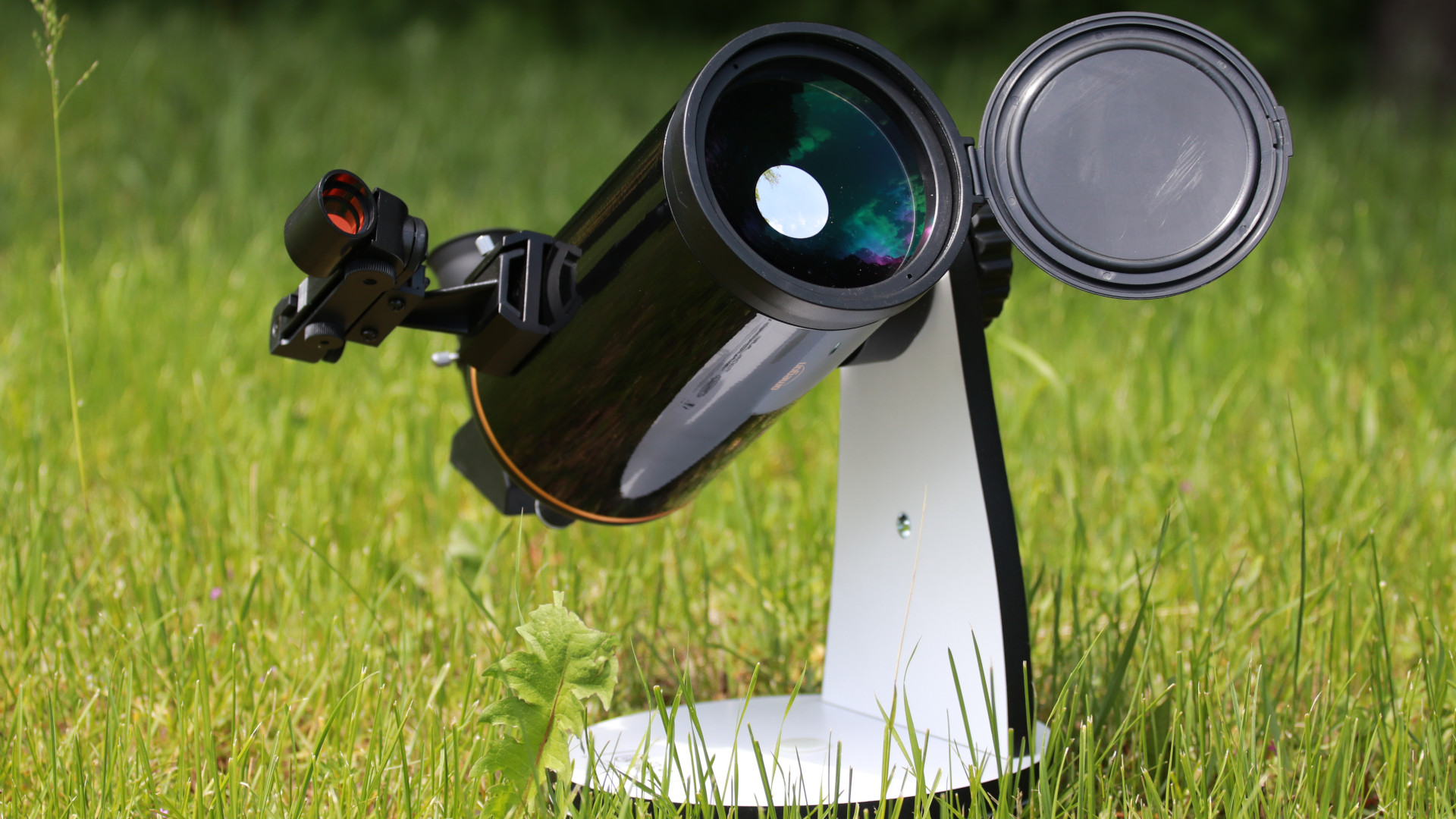Reflector
A perennial favourite: the Newtonian telescope and its advantages. Why should you choose this classic design?
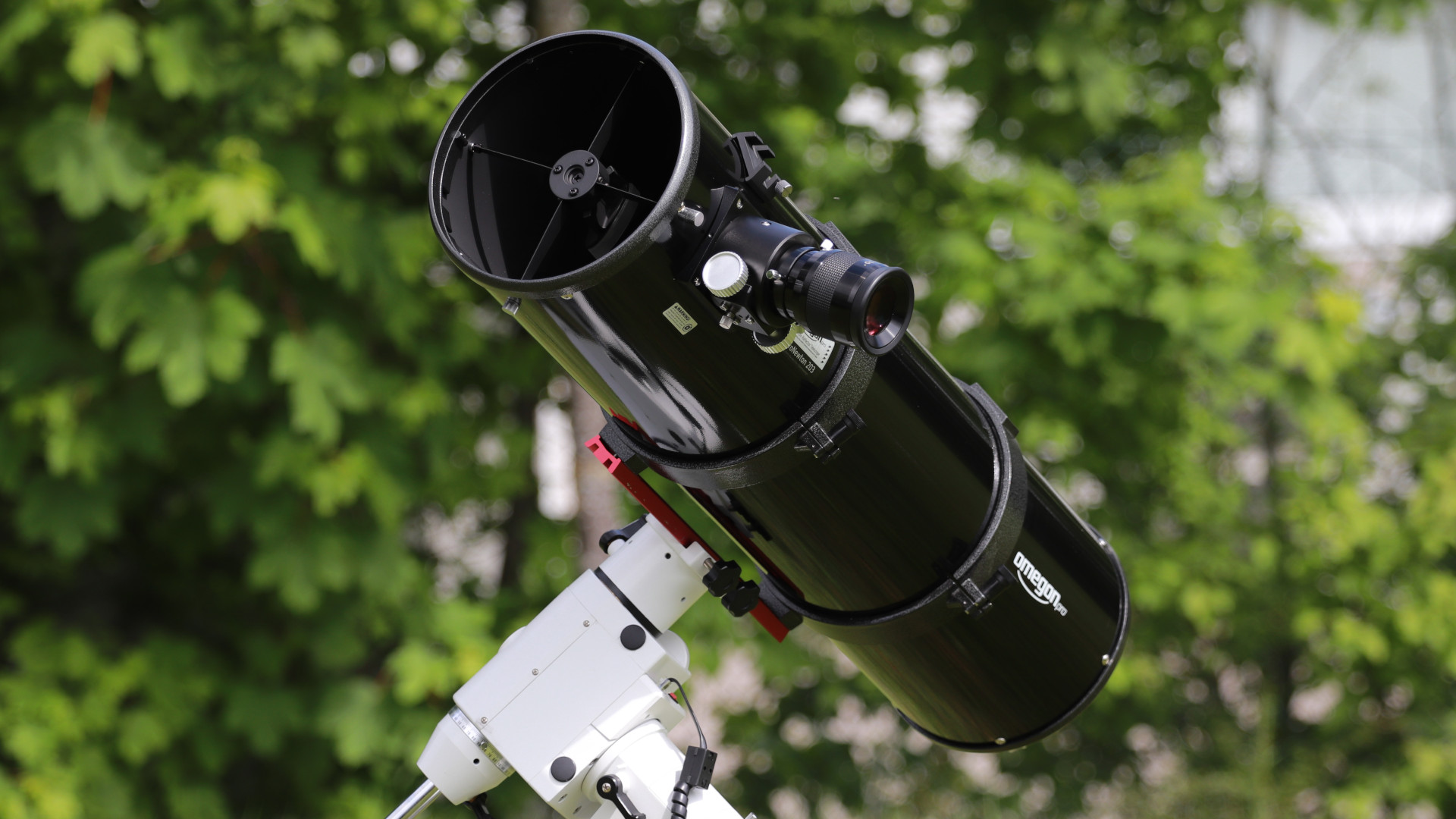
The Newtonian reflector is the classic mirror telescope. The principle is simple and yet ingenious. And hundreds of years old. What Elvis Presley was for rock & roll, so too is Isaac Newton for this telescope: a legend. And the Newtonian reflector is as popular today as it ever was.
Isaac Newton developed this telescope in 1668. Actually, Newton further developed an existing product, because in 1616 the physicist Zucchi had already built a telescope that worked with mirrors. Newton's idea was to install a deflecting mirror in the tube. Just imagine: a telescope designed and developed in 1668 is still one of the most popular and best-selling amateur telescopes today, in this age of smartphones and iPads.
The Newtonian Reflector, named after Isaac Newton, is the absolute classic reflector telescope.
The main mirror, which collects light and reflects it, is located at the lower end of the tube. The smaller secondary mirror is located in the top section. It deflects the light by 90°. The focuser, in which one can deploy an eyepiece or camera in order to focus the image, is also located here.
The advantage of this system is that there are no lenses involved, and therefore no chromatic aberration arises. In addition, this design offers the largest aperture for the money.
The advantages:
In contrast to a lens telescope, a reflector has no lenses. This means that Newtonian reflectors cannot cause colour fringes around bright objects. But it's not only this that determines whether an image is good. Just as important is the mirrors’ quality and reflectance, which can vary significantly from one telescope to another.
The disadvantages:
One disadvantage compared to refractors is the shadowing effect on the incoming light caused by the secondary mirror. This is known as obstruction.
By contrast, a refractor does not have any components in the optical path and therefore no obstruction. Thus, a refractor with the same aperture would provide more light and more contrast than a reflector.
However, a refractor with the same aperture is generally too expensive for most astronomy fans, or not available in series production in certain sizes.
The focal ratio
The focal ratio of a telescope is the relationship between the telescope aperture and the focal length. A telescope with a 100 mm aperture and a focal length of 1000 mm has a focal ratio of f/10. The focal length is 10 times greater than the aperture.
With Newtonian reflectors, the focal ratio is relatively variable. Whereas with refractors it is better to choose a smaller focal ratio (e.g. f/10 - reduced chromatic aberration), with Newtonian telescopes large focal ratios of up to 1:4 can be confidently produced. As a result, the telescope gathers a lot of light and has a relatively short focal length.
A great advantage of the Newtonian telescope is its reasonable price. Compared to refractors and telescopes with mirrors and lenses such as the Schmidt-Cassegrain, the price of a Newtonian telescope is unbeatable. For relatively little money you get an optical performance which would cost you significantly more with most other telescopes.
Newtonian telescopes in a catadioptric design
There are also Newtonian telescopes which do not conform to the classic design, but which also feature a lens or a correction plate. These instruments are called catadioptric Newtonian telescopes.
In the case of the Schmidt-Newtonian telescopes, a Schmidt corrector plate is installed in front of the mirror. This plate forms part of a closed system, therefore the air in the tube is constant and does not change in temperature quickly. A further advantage: this plate corrects image defects caused by the primary mirror. The secondary mirror is mounted behind the Schmidt plate, so that no secondary mirror struts can cause an obstruction.
Fighting the fixed Barlow lens
However, there are other catadioptric Newtonian telescopes that do not have a Schmidt plate. They are mainly found in budget telescopes and have a Barlow lens (or similar lens) installed in the optical path to increase the focal length. This allows the overall telescope design to remain compact and the focal length to be as long as possible.
A Barlow lens is a component with a negative lens that extends the focal length. The disadvantage of these telescopes is that their image quality can be impaired. Armageddon for amateur astronomers. We prefer to avoid the annihilation of our astronomical dreams.
An even greater disadvantage is that these systems are relatively difficult to adjust. You need to be able to see both the primary mirror and the secondary mirror in order to align a Newtonian telescope, this can be very difficult with these telescopes. Since such telescopes are often used by beginners, it is difficult for them to carry out this alignment. However, some telescopes at least have the advantage that you can unscrew the Barlow lens in order to do this.
Due to these facts, we would recommend that beginners opt for one of the classic Newtonian telescopes, i.e. without a built-in lens.
Recommended reflectors
